- Author
- Editorial Staff
- Subjects
- Ship histories and stories, History - post WWII, Australian Warships
- Tags
-
- RAN Ships
- HMAS Teal, HMAS Hawk, HMAS Ibis
- Publication
- March 2023 edition of the Naval Historical Review (all rights reserved)
The following arises from the article A Magnificent Greek Warship published in the December 2022 edition of the Naval Historical Review which explored the history of the Greek museum ship RHNS Averoff. Unknown to the author, another floating museum was being established in Northern Cyprus using the ex-Australian minesweeper HMAS Teal.
This new article seeks to briefly discuss the modern development of the Republic of Greece and associated Republic of Cyprus and the relationship with Australia before rounding off with the history of Teal.
The Briefest of Histories
The complex history of modern Greece extends from 1821, and in particular from the outcome of the Russo-Turkish Wars (which included the Crimean War), when Great Britain gained control of much of the Ottoman Empire. Border disputes continued with further territorial claims arising from the outcomes of both the First and Second World Wars.
In October 1940 Italian forces invaded Greece but encountered fierce resistance. As part of an Allied response to assist Greek nationalists the Royal Navy, assisted by RAN ships, began ferrying some 60,000 Commonwealth troops from North Africa to Greece. This involved the Australian 6th Division, the New Zealand 2nd Division and the British 1st Armoured Brigade. Owing to a lack of transports many troops were carried in naval ships including the cruiser HMAS Perth, and Australian N-class destroyers, plus the so called ‘Scrap Iron Flotilla’. The entry of Allied forces brought a rapid response from Germany with substantial army and air force units joining the campaign in early April.
This short and disastrous war led to Allied defeats and withdrawals firstly from mainland Greece and secondly from Crete in early 1941. The overall campaign resulted in over 2500 Allied deaths, 3500 wounded and 10,000 taken prisoner. About 50,000 were rescued from Greece with half of these taken to Crete and the remainder to North Africa.
The Second World War destabilised the fragile political situation in Greece, and once liberated from Axis control the country descended into civil war fought between communists and those loyal to the monarchist regime. Post-war, fearing Russian influence extending into the Mediterranean British and American forces supported a return of a loyalist government. This lasted until April 1967 when a coup was staged by right-wing military officers leading to mass arrests of dissidents. Initially King Constantine supported the junta but when the two factions collided the monarchy was abolished in June 1973.
A military coup in Cyprus in July 1974 was largely defused by the presence of United Nations forces stationed on the island. Following a referendum and free elections in Greece, which rejected a return of the monarchy, parliamentary democracy was restored on 8 December 1974.
The Cyprus Connection
Cyprus, the third largest Mediterranean island, is much closer to Asia than mainland Europe and it is therefore a meeting place of Western and Eastern cultures. This strategically important island has been ruled by Greeks, Assyrians, Phoenicians, Romans, Persians, Crusaders, French, Ottomans and the British before gaining independence in 1960.
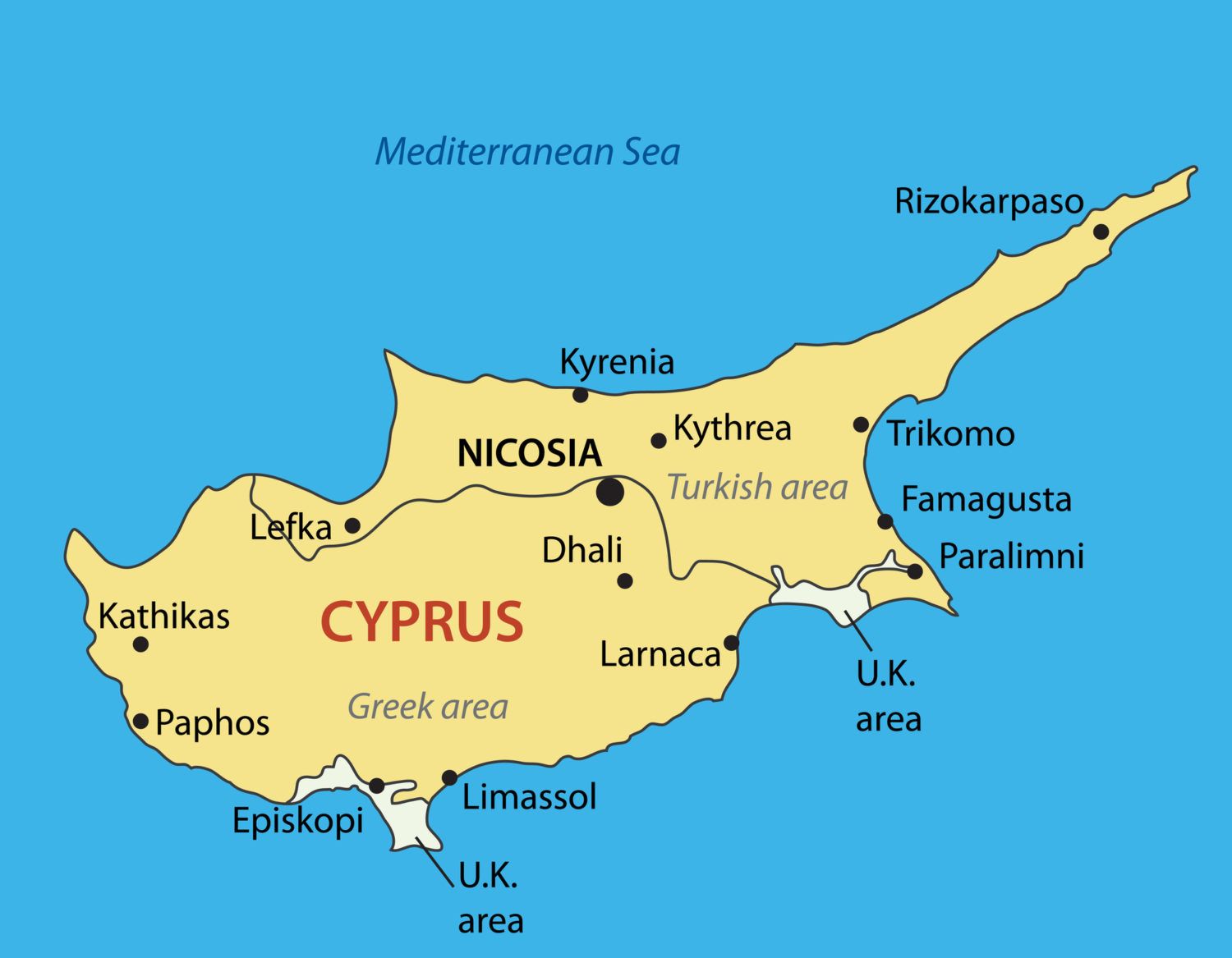
The modern history of Cyprus is mainly bound to that of Greece but at the beginning of WWI, when Australian forces earned their spurs at Gallipoli, Britain formally annexed Cyprus. With the end of Ottoman rule the local community, primarily of Greek origin, was in favour of unification with Greece, or Enosis1. In 1930 the pursuit of Enosis by hardline Greeks resulted in a series of riots, leading to British military intervention.
Greece suffered greatly at the hands of Italians and then Germans in WWII but German losses in the airborne capture of Crete convinced them that a similar assault on Cyprus was a step too far and the island was largely left alone, other than for a few bombing raids. Not far away Syria, which was occupied by a Vichy French regime, was invaded by British and Australian troops in July 1941, supported by aircraft based at Cyprus. This led to the building of airstrips throughout the island and a rapid increase of an RAF presence.
Post-war, Greek Cypriots who were supported by the Orthodox Church formed a resistance organisation known as EOKA that fought against British rule and for reunion with Greece. The EOKA campaign became vicious with a series of bombing attacks and assassinations. Although EOKA was a small organisation having about 300 full-time fighters it was well led by General Georgios Grivas supported by the majority of the Greek speaking population plus the church, led by the formidable Archbishop Makarios.
By 1955 a State of Emergency had been declared and Britain poured in troops, supported by air and sea borne forces. At its height Britain had 40,000 troops in the island and then along came the Suez crisis placing an even greater strain on British resources. The bloody EOKA campaign, with an official toll of 475 British and 90 EOKA deaths, did not result in union with Greece but instead became the forerunner of an Independent Republic of Cyprus.
The 1960 constitution of the new Republic of Cyprus, under President Makarios, resulted in a power sharing arrangement between the majority Greek and minority Turkish communities. Following the establishment of the new republic Britain retained sovereign control over two military base areas at Akrotiri (near Limossol) and Dhekelia (near Famagusta) plus access to some other smaller military sites. The two main areas comprise 254 km2 or 98 square miles.
In November 1963 many changes to the constitution were proposed which disadvantaged and enraged the Turkish community, with resulting sectarian conflict. In 1964 this led to United Nations involvement, with peacekeeping forces first sent to the island on 27 March 1964. At its peak these forces grew to 6000 troops. A smaller force remains to this day. The sensitivity of the Cyprus situation does not escape us with expressions such as ‘terrorists’ on one side can be seen as ‘freedom fighters seeking liberation’ by another side, we therefore do not imply disrespect to either side in this conflict when using these terms.
On 15 July 1974 the Cypriot National Guard staged a coup d’état, overthrowing the government with the aim of unifying the island with Greece. Five days later, with intense fighting breaking out across the land Turkey launched a counter offensive to protect the Turkish Cypriot minority. There was realistic fear of an all-out war between Greece and Turkey. Thankfully a subsequent cease-fire led to partitioning of the island which displaced thousands of Cypriots. A United Nations controlled demilitarisation zone was created, extending more than 180 km from east to west across the country. While not recognised by the international community the northern part of the island is sometimes known as the Turkish Republic of Northern Cyprus.
Australian Peacekeeping Forces
From the outset the United Nations requested Australian military participation in its peacekeeping forces in Cyprus. Owing to its commitments in South-East Asia the Australian Government declined but agreed to provide a police contingent. Initially this comprised 40 men, drawn from Australian police forces representing all states and territories and the Australian Federal Police, who were deployed in May 1964.
The United Nations Peacekeeping Force in Cyprus, established to prevent fighting between the country’s Greek and Turkish communities, is one of the world’s biggest such undertakings and after nearly 59 years remains operational to this day.
The Australian Peace Keeping contingent which over the years has involved 1600 personnel serving on the island, with three members dying on active service, concluded on 16 June 2017. A handful of Australian civilian and military observers remained and in January 2019 Australian Major-General Cheryl Pearce was given overall command of the 1000 strong United Nations Peacekeeping Force in Cyprus. She held this position under Operation CHARTER until January 2021 when Australia formally withdrew the last of its civil and military personnel and ceased providing further support to this operation.
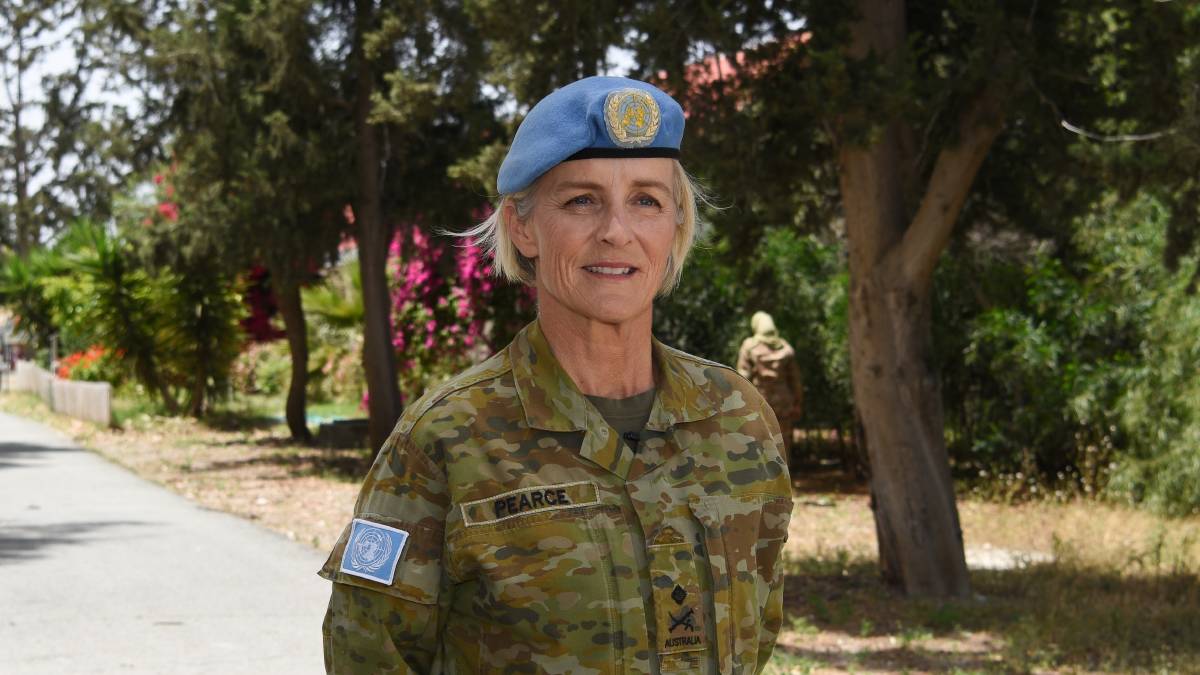
The Fore and Aft of HMAS Teal
In September 1962 an unusual flotilla assembled at the Royal Navy’s principal base at Portsmouth on the south coast of England. These comprised the large fleet replenishment tanker HMAS Supply and six small Ton-class minesweepers, HMA Ships Curlew, Gull, Hawk, Ibis, Snipe and Teal.
All these ships had previously served with the Royal Navy (RN), or more precisely in the case of Supply with the Royal Fleet Auxiliary (RFA). The Tide-class fast replenishment tanker was built at the famous Belfast yard of Harland & Wolff for the Royal Australian Navy (RAN) and entered service on 28 May 1955. Owing to operational pressures, amongst them the Suez crisis, she was leased to the Admiralty. She was officially the Royal Australian Fleet Auxiliary Tide Austral and under Admiralty control was known as RFA Tide Austral. But now some years later and after refit she was being returned to her original owners. On return to the RAN she was commissioned on 15 August 1962 as HMAS Tide Austral but a few days later was renamed HMAS Supply.
The ubiquitous Ton-class coastal minesweepers were built in great numbers by various British yards between 1953 and 1960 and named after towns and villages with names ending in ’ton’. They were originally fitted with Mirrlees Blackstone or Napier Deltic diesel engines, the latter were of lighter weight being mostly of aluminium with reduced magnetic signature, but the most important fact was that they proved superior in service. Deltic engines were made in large numbers with similar models used by railway locomotives.
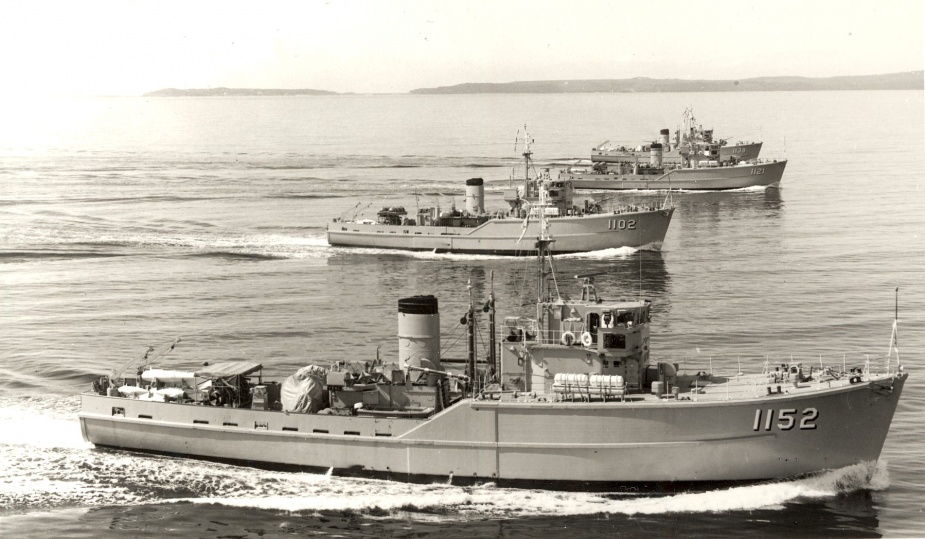
They had the advantage of being relatively simple to remove for major maintenance with replacements installed at short notice. Accordingly, nearly all these craft were retrofitted with Napier engines.
The six RAN minesweepers were formed into the 16th Minesweeping Squadron with Hawk (A/Commander Donald Alexander Ross RAN) as Squadron Commander. While senior staff were permanent navy, about 60% of the crews were RANR. All six ships had seen very limited RN operational service and had been mothballed into Reserve. When reactivated, and before handover to the RAN, they were all fitted with new Napier Deltic engines, air-conditioning and stabilisers, and were renamed after birds. The six refitted ships cost the Australian Government £5.5 m.
After a short workup on 1 October 1962 Task Group 328.1, under the overall command of Captain Geoffrey Vernon Gladstone DSC & Bar RAN in Supply, sailed from Portsmouth. For a replenishment vessel used to working with major fleet units, acting as mother to an unruly brood must have come as a surprise and considerable attention was required to overcome breakdowns. The homeward voyage with the six sweepers was made via Gibraltar, Malta, Port Said, Aden, Colombo, Singapore and Darwin. After negotiating the Great Barrier Reef Supply proceeded independently and reached Sydney on 4 December with the 16th Minesweeping Squadron arriving safely on 7 December 1962.
Ton Class Minesweepers
Some 119 of the Admiralty designed Ton-class minesweepers were built. John Thornycroft of Southampton was the lead builder, although between 1953 and 1960 fifteen other British shipyards were involved in construction, One further vessel, HMS Wilton, was constructed to a similar design in 1970 and was experimental as the first warship in the world to be built out of glass reinforced plastic (GRP, otherwise known as fibreglass).
They were 440 tons displacement fully laden, largely constructed from aluminium and other non-ferromagneticmaterials, with a hull composed of a double layer of mahogany planking and wooden decks. The Ton-class were intended to meet a possible Soviet mining threat to shipping in vulnerable focal points and harbour entrances.
The main characteristics were:
Dimensions: Length 152 ft (49m) x beam 28 ft (8.5m) x draft 8½ ft (2.5m)
Displacement: 440 tons – fully laden
Propulsion: Original ships: 2 x Mirrlees 12–cylinder diesel engines = 2500 HP
Later ships and retro-fitted: 2 x Napier Deltic diesels, 12 banks of 3 pistons = 3000 HP
Max Speed: 15 knots – 8 knots towing with sweeps streamed
Range: 2300 nautical miles at 13 knots on one engine for fuel economy
Navigation Radar: Decca Type 1006 – 35 miles range
Mine hunting Sonar: Plessey Type 193 echo sounder to 300 feet depth.
Armament: 2 x 40 mm Bofors and 2 x 7.63 GP machine guns. When converted to minehunting one Bofor abaft the funnel was exchanged for a twin 20 mm Oerlikon.
Complement: As minesweeper four officers and 25 ratings but increased to five officers and 33 ratings when converted to minehunting.
As an interesting aside, His Majesty King Charles III, when 27-year-old Lieutenant Wales RN, commanded the Portsmouth based HMS Bonington from February to December 1976. In Hands to Boarding Stations His Royal Highness provided a foreword to the story of one RAN ship, where he says:
‘These tough little ships saw service right around the globe, in many navies. As a class, they made a unique contribution to international security, helping to keep the peace through long years of Cold War and confrontation. Often unsung, certainly uncomfortable, sometimes in danger, the ships went about their duties with a breezy informality. They had a well-deserved reputation for rolling on wet grass, but despite this feature and the privations of life in the cramped conditions onboard – or perhaps because of these adversities – the ships were popular with their people’.
HMAS Teal
HMS Jackton, named after a village south of Glasgow, was laid down at the Dartmouth yard of Phillip & Sons in January 1953 and launched on 28 February 1955.
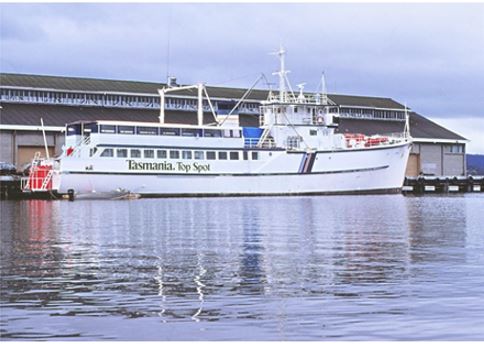
She was completed on 20 July 1956, commissioned the same year and shortly afterwards was handed over to the Agamemnon Shipyard at Buckler’s Hard for preservation and then placed into operational Reserve at Hythe near Southampton. Following purchase by the Australian Government in 1961 the ship was refitted by Brooke Marine at Lowestoft, where she was recommissioned as HMAS Teal, under the command of Lieutenant Commander John Gordon Stacey RAN, on 30 August 1962.
Operational History
After arrival in Australia the squadron first berthed at Garden Island Dockyard but a week later on 14 December 1962 relocated to their new purpose-built home base further up harbour at HMAS Waterhen.
On 20 September 1963, Teal and her sister ships sailed for their first overseas deployment as part of a large minesweeping task to clear a channel into Tonolei Harbour in Bougainville, where United States aircraft had dropped over 150 magnetic mines in 1943. The deployment also included visits to Singapore and Port Moresby, and hydrographic surveys in the Solomon Sea. The squadron returned to Sydney that December.
While exercising on the Australian east coast in February 1964 Teal in company with Ibis and Hawk was involved in the search for survivors of the Melbourne/Voyager disaster. Afterwards she began a refit in preparation for a Far East deployment as part of Australia’s contribution to Commonwealth support for Malaysia during its undeclared war with Indonesia, known as ‘Confrontation’.
In company with Ibis, Teal departed Australia for Singapore on 17 August 1964 to relieve Gull and Hawk on patrol duties. The deployment proved eventful for Teal as on 6 December she fired her machine-gun across the bow of an unlit vessel attempting to avoid interception. The vessel eventually stopped and three Indonesian soldiers were arrested. On 13 December she encountered two sampans off Raffles Light. The two vessels separated and one escaped into Indonesian waters, the opening fire of the other hit Teal with near misses to her crew. Teal’s return fire killed three of the seven crewmen aboard and the vessel surrendered. Teal’s Commanding Officer, Lieutenant Keith Murray, RAN, was awarded the Distinguished Service Cross for his service during these incidents.
On 23 February 1965 she arrested a boatload of nine uniformed and heavily armed Indonesians, all carrying the insignia of the Malay National Army. The patrol regime developed by Teal became the standard operating procedure for the RAN during Confrontation with ships now remaining on station with crew changes and maintenance undertaken at the Royal Navy bases in Singapore or Hong Kong.
The Australian sweepers were supported by two further Ton-class manned by our cousins from across the Tasman. These two vessels had been RN ships in reserve at Singapore and were recommissioned as HMNZ Ships Hickleton and Santon in April 1965. On 28 June 1966 Hickleton was involved in a gun duel with a vessel carrying armed infiltrators, two of whom were killed. In this action, the last time a ship of the RNZN fired in anger, the commanding officer Lieutenant Commander Peter Wright was awarded the DSC and Able Seaman Charles Taylor the DSM. With the end of Confrontation both ships returned to the UK where they decommissioned in December 1966. Incidentally, neither vessel entered New Zealand waters and later both were sold to the Argentine Navy.
Teal and Ibis arrived back in Sydney on 8 February after an absence of some 17 months and entered a well-earned refit. From June 1966, Teal commenced a busy exercise programme on the Australian coast, deploying to northern Australia for eight months. Later Teal, in company with Ibis, left Sydney to circumnavigate the country conducting surveys and mine counter-measures exercises. The two ships returned to Sydney on 21 December becoming the first Ton-class ships to circumnavigate the continent.
After much activity the future of the mine countermeasures ships came under scrutiny and indecision while new replacement ships were planned to enter service. Both Teal and Ibis were paid off into Operational Reserve on 15 January 1968. However, nine months later, on 23 September 1968, Teal briefly recommissioned under command of Lieutenant Commander R.S. Barrell, RAN, participating in Exercise SHADOW prior to again being placed in Operational Reserve on 14 October 1968.
A year later on 7 November 1969, Teal was recommissioned under the command of Lieutenant Commander H.E. Jones, RAN. On 30 April 1970, Teal, in company with Curlew and Ibis, departed Sydney for South East Asia and participated in Exercises CRACKSHOT and BERSATU PADU, with more than 30 ships of the Australian, British, Malaysian and New Zealand Navies.
Teal was once again decommissioned on 14 August 1970. Some sixteen months later, on 7 January 1971, she recommissioned under the command of Lieutenant Commander R. J. Burns, RAN.
On 26 June 1972, Teal departed Australia for a 4½ month Far East deployment in company with Curlew and Snipeduring which they conducted general survey duties, cleared a WWII minefield in the vicinity of Port Moresby and participated in the SEATO exercise SEA SCORPION. The three ships returned to Australia on 10 November.
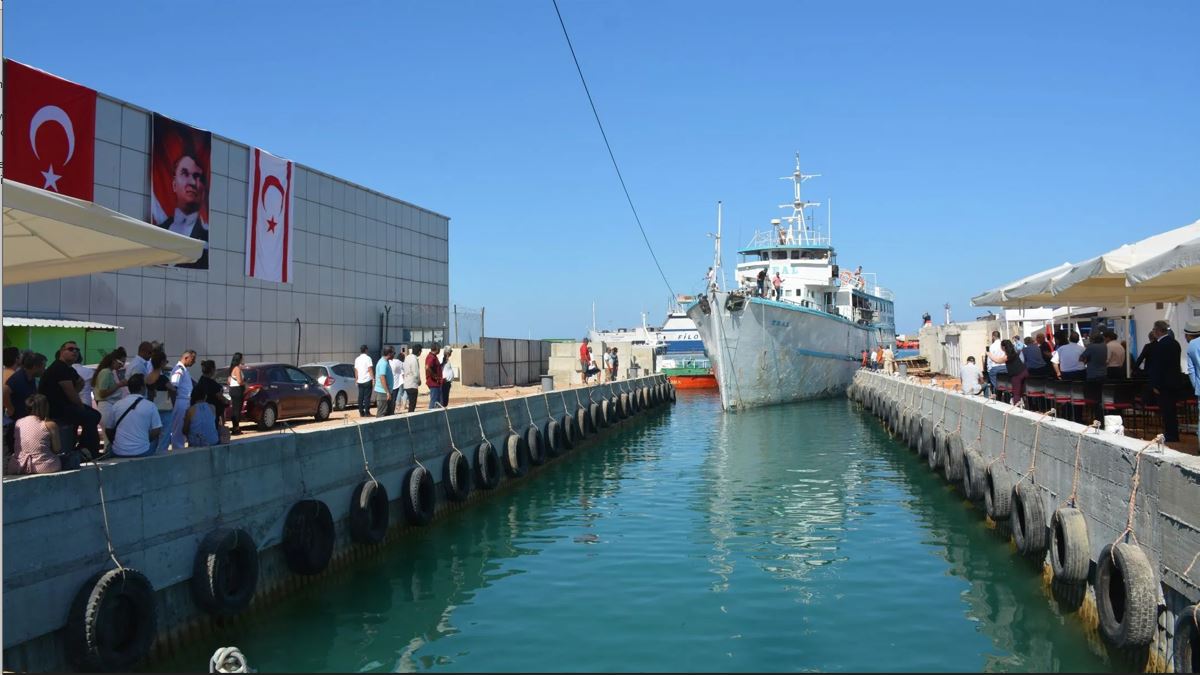
Early in 1973 Teal participated in fishery patrols and exercises in the Bass Strait with HMA Ships Bass, Banks and Curlew. She was finally decommissioned and placed into Operational Reserve on 31 May 1973. During her 7½ years of active service in the RAN, she had steamed 182,083 nautical miles. Teal remained in the Reserve Fleet for several years before being sold out of service in October 1977.
A New Beginning for Teal
From various sites we have been able to piece together the following summary of her later life. While there are a number of versions of her subsequent history she was first purchased in October 1977 by Ian and Gary Baker of Margate in Tasmania and converted into a fishing trawler. In 1984 she is listed as owned by Teal Products of Hobart but in the same year transferred to Queensland under another owner, Mason Leisure Industries of Brisbane. She was modified for charter work with an extensive superstructure capable of accommodating 49 passengers and 21 crew. She appears to have returned to Tasmania in 1986 for similar cruise charter work. In 1990 she was sold to the Near East University in Cyprus as a research and training vessel. In 2021 she was converted into a floating maritime museum at the port of Kyrenia in northern Cyprus.
Summary
This small wooden hulled vessel has had a remarkable life spanning nearly 70 years and a new chapter has only just begun. Following her completion in 1956 as HMS Jackton, this state of the art minesweeper was surplus and placed into reserve for five years.
In late 1961 along came the RAN seeking to reinvigorate its mines countermeasures presence and purchased some little used vessels from the Royal Navy’s Reserve Fleet. Included in these six renamed ships was Teal. After an exciting ocean passage the new squadron arrived in Sydney ready to celebrate Christmas 1962 in their new home Down Under.
These ships were invaluable to the RAN, providing a presence on the Australian coast and in the Pacific islands where they assisted in the large-scale task of clearing WWII explosives. Most important was their contribution in Malaysia during the period of Confrontation where Teal and her sisters proved worthy as versatile and capable patrol vessels.
Overall the 15-year period when the Ton-class were in Australian waters was one of relearning the art of mine countermeasures but also of indecision into the type and capabilities of vessels required. As a result, ships the likes of Teal had a limited operational life of only 7½ years and an almost equal time spent decommissioned in Reserve. This undoubtedly added to the longevity of her hull.
Teal’s life following her naval service has been difficult to piece together and we should be delighted to hear from any of our readers who may be able to add to this historically important story. Another remarkable feature is that despite changes of ownership Teal still appears to have retained her adopted Australian name.
References
Bastock, John, Australia’s Ships of War, Angus & Robertson, Sydney, 1975.
Carlton, Mike, The Scrap Iron Flotilla, Random House, Sydney, 2022.
Cox, Rex & Fildes, Robert, Aus-Ships, 6th Edition, Ships Worldwide, Sydney, 2021.
Foster, John, Hands to Boarding Stations – Australian Minesweeper HMAS Hawk: Confrontation with Indonesia 1965-1966, Australian Military History Publications, Sydney, 2003.
Jones, Adam, Genocide: A Comprehensive Introduction, Routledge, London, 2010.
“Ton History”. tca2000.co.uk. The Ton Class Association. Retrieved 23 January 2023.
McDougall, R. J., New Zealand Naval Vessels, G. P. Books, Christchurch NZ, 1989.
Moustakis, Fotios, The Greek-Turkish Relationship and NATO, Routledge, London, 2003.
https://neu.edu.tr/cyprus-first-floating-ship-museum-teal-was-placed-in-a-special-area-built-in-kyrenia-harbor-to-be-converted-into-a-maritime-history-museum-with-the-participation-of-the-minister-of-public-works-a/?lang=en.
Notes:
1 Enosis (Greek: Ένωσις, IPA: [ˈenosis], ‘union’) is the movement of various Greek communities that live outside Greece, for incorporation of the regions they inhabit into the Greek state. Widely known is the case of the Greek-Cypriots for union of Cyprus into Greece.




